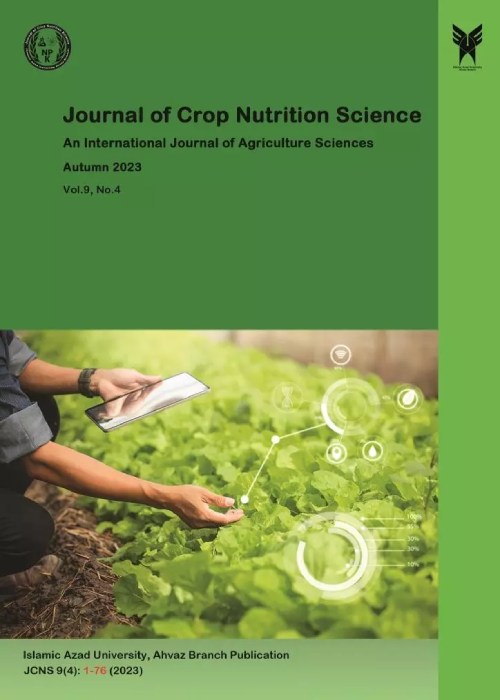Response of Yield and Morphophysiological Characteristics of Corn (SC 704) to Different Source of Potash Fertilizer under Deficient Irrigation Situation (at South West of Iran)
Author(s):
Article Type:
Research/Original Article (بدون رتبه معتبر)
Abstract:
BACKGROUND
Deficit irrigation strategies were effective in saving volume of water. Potassium is an essential nutrient that affects most of the biochemical and physiological processes are involved in plant resistance to biotic and a biotic stresses. OBJECTIVES
This study was conducted to assess effect of different pattern of irrigation and several source of potassium on crop production and morphological traits of corn. METHODS
This research was carried out via split plot experiment based on randomized complete blocks design with three replications along 2015 year. The main factor included three level of Irrigation regime (I1: Conventional Irrigation or Control, I2: Fix furrow irrigation, I3: Alternate furrow irrigation) and three level of potassium (K1: 100 kg.ha-1 Potassium sulfate base application or Control, K2: 10 kg.ha-1 Solo potash with first irrigation, K3: 100 gr.ha-1 PotaBARVAR-2 as a biofertilizer + 50 kg.ha-1 Potassium sulfate base application) belonged to sub factor. RESULT
The results showed that in different irrigation patterns, application K3 treatment with alternate furrow irrigation increased the seed yield and its components. Under deficient irrigation conditions, the plant height, length and diameter of ear were reduced and the application of K3 treatment with alternate furrow irrigation led to increase above traits. The highest number of rows per ear (16.6) and number of seed per row (28) were obtained from the interaction effect of normal irrigation and K3 treatment. The lowest number of row per ear (12.2) was due to the fix furrow irrigation and K2 treatment. The highest (237.5 gr) and lowest (213.5 gr) amount of 1000-seed weight belonged to I1K3 and I2K2 treatments, respectively. Also the maximum (5463 kg.ha-1) and minimum (2966 kg.ha-1) amount of seed yield was achieved from I1K3 and I2K2 treatments, respectively. CONCLUSION
Alternate furrow irrigation showed a significant advantage over the fix furrow irrigation after control with K3 treatment had the highest seed yield. Generally use of 100 gr.ha-1 PotaBARVAR-2 as a biofertilizer + 50 kg.ha-1 Potassium sulfate base applications with alternate furrow irrigation can be advised to farmers.Keywords:
Language:
English
Published:
Journal of Crop Nutrition Science, Volume:5 Issue: 3, Summer 2019
Pages:
12 to 25
magiran.com/p2635448
دانلود و مطالعه متن این مقاله با یکی از روشهای زیر امکان پذیر است:
اشتراک شخصی
با عضویت و پرداخت آنلاین حق اشتراک یکساله به مبلغ 1,390,000ريال میتوانید 70 عنوان مطلب دانلود کنید!
اشتراک سازمانی
به کتابخانه دانشگاه یا محل کار خود پیشنهاد کنید تا اشتراک سازمانی این پایگاه را برای دسترسی نامحدود همه کاربران به متن مطالب تهیه نمایند!
توجه!
- حق عضویت دریافتی صرف حمایت از نشریات عضو و نگهداری، تکمیل و توسعه مگیران میشود.
- پرداخت حق اشتراک و دانلود مقالات اجازه بازنشر آن در سایر رسانههای چاپی و دیجیتال را به کاربر نمیدهد.
In order to view content subscription is required
Personal subscription
Subscribe magiran.com for 70 € euros via PayPal and download 70 articles during a year.
Organization subscription
Please contact us to subscribe your university or library for unlimited access!


